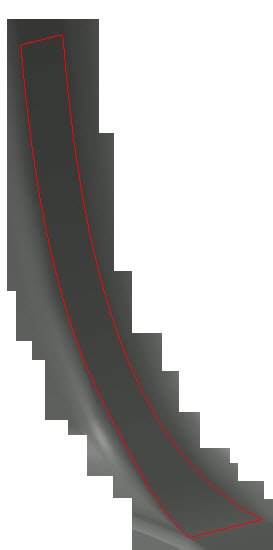Community Tip - Want the oppurtunity to discuss enhancements to PTC products? Join a working group! X
- Community
- Creo+ and Creo Parametric
- System Administration, Installation, and Licensing topics
- Any tips for dealing with mesh errors related to C...
- Subscribe to RSS Feed
- Mark Topic as New
- Mark Topic as Read
- Float this Topic for Current User
- Bookmark
- Subscribe
- Mute
- Printer Friendly Page
Any tips for dealing with mesh errors related to Conical Rounds?
- Mark as New
- Bookmark
- Subscribe
- Mute
- Subscribe to RSS Feed
- Permalink
- Notify Moderator
Any tips for dealing with mesh errors related to Conical Rounds?
Hoping someone has a few pointers with getting Conic Rounds to mesh in Creo Simulate?
I have tried adjusting the settings of the round, adding auto geom edge distribution controls with no success.
Any suggestion on what I might try?
Thanks,
Don Anderson

This thread is inactive and closed by the PTC Community Management Team. If you would like to provide a reply and re-open this thread, please notify the moderator and reference the thread. You may also use "Start a topic" button to ask a new question. Please be sure to include what version of the PTC product you are using so another community member knowledgeable about your version may be able to assist.
Don Anderson
No time Like the Present!
Solved! Go to Solution.
- Labels:
-
General
Accepted Solutions
- Mark as New
- Bookmark
- Subscribe
- Mute
- Subscribe to RSS Feed
- Permalink
- Notify Moderator
Donald,
Do you by any chance have a model, or part of a model, that you can upload? Possibly/probably the conical round produces some geometry that AutoGEM can't handle.
If it's not in a critical region, try to replace it with a circular round. That is obviously not an option if it is a critical area of your model and you need accurate results.
Another strategy is to export a step- file and then re-import that step file into a new part. When the Creo geometry is translated into STEP, then the surface definition becomes(or might become) something different from the native Creo surface definition, and it is possible that Creo Simulate can mesh this exported-re-imported geometry. The imported geometry will then be slightly different than the original, but I would think this difference is negligible in most cases.
To export a step that I then re-import is a trick I often use when preparing a model for analysis. You lose the parametric control, but you also remove all dependencies so you can play around with the model and change it as you wish.
/Mats L/
- Mark as New
- Bookmark
- Subscribe
- Mute
- Subscribe to RSS Feed
- Permalink
- Notify Moderator
Donald,
Do you by any chance have a model, or part of a model, that you can upload? Possibly/probably the conical round produces some geometry that AutoGEM can't handle.
If it's not in a critical region, try to replace it with a circular round. That is obviously not an option if it is a critical area of your model and you need accurate results.
Another strategy is to export a step- file and then re-import that step file into a new part. When the Creo geometry is translated into STEP, then the surface definition becomes(or might become) something different from the native Creo surface definition, and it is possible that Creo Simulate can mesh this exported-re-imported geometry. The imported geometry will then be slightly different than the original, but I would think this difference is negligible in most cases.
To export a step that I then re-import is a trick I often use when preparing a model for analysis. You lose the parametric control, but you also remove all dependencies so you can play around with the model and change it as you wish.
/Mats L/
- Mark as New
- Bookmark
- Subscribe
- Mute
- Subscribe to RSS Feed
- Permalink
- Notify Moderator
Mats,
Sorry I'm not able to upload the data at this time.
The Conical round is a D1 X D2 Conic with values of 0.5 20 40 at the interface of a rib going into a boss.
The models I created to simulate the issue I was able to mesh but I'm not able to get it to mesh in the current model I'm working on.
I have changed the rounds to simple rounds like you sugested and that seems to work. Once the project gets further along I will pass the model on to ptc for review.
Thanks
Don Anderson
Don Anderson
No time Like the Present!





